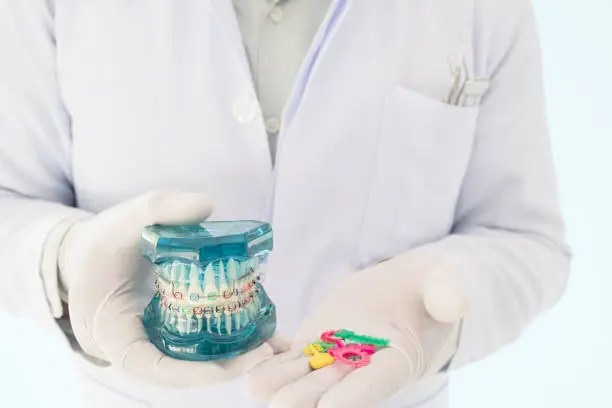Teeth implants have revolutionized the world of modern dentistry, offering a long-lasting solution for people with missing or damaged teeth. Whether you’re looking to restore your smile or improve your oral health, understanding teeth implants can help you make an informed decision.
What Are Teeth Implants, and Who Can Benefit from Them?
Teeth implants, also known as dental implants, are artificial tooth roots made from materials like titanium. They are surgically placed into the jawbone to support replacement teeth, such as crowns, bridges, or dentures. Dental implants like those in Chula Vista, California, provide a stable and permanent solution for restoring missing teeth, unlike removable dentures.
Who can benefit?
- Individuals with one or more missing teeth
- Those with a fully developed jawbone
- Patients seeking a durable alternative to dentures or bridges
- People who have good oral and general health
If you’re unsure whether implants are right for you, consulting a dentist experienced with implants is the best next step.
Types of Teeth Implants
There are two main types of teeth implants, each suited to different needs and cases:
1. Endosteal Implants
These are the most common type of implants. They are inserted directly into the jawbone and act as a solid base for replacement teeth. Endosteal implants, commonly crafted from titanium, are designed in the shape of small screws for optimal functionality.
- Best for: Patients with healthy jawbone density and volume.
- Process: Requires time for the implant to fuse with the bone, a process known as osseointegration.
2. Subperiosteal Implants
If a patient has insufficient bone density or cannot undergo a bone graft, subperiosteal implants may be an alternative. These implants are positioned beneath the gums but sit atop the jawbone instead of being embedded within it.
- Best for: Patients unable to undergo bone augmentation procedures.
- Process: Less invasive than an endosteal implants.
Your dentist will assess your oral health and bone structure to determine which type is best for you.
The Implant Process: Step-by-Step Guide
Getting teeth implants involves several stages that occur over weeks or months. Knowing what to expect can make the process more manageable.
Step 1: Initial Consultation
Your dentist will evaluate your oral health, take X-rays or a 3D scan of your jaw, and discuss your goals. They’ll also determine if any preparatory procedures, such as bone grafting, are necessary.
Step 2: Implant Placement
During a minor surgical procedure, the implant is positioned in your jawbone. Local anesthesia is used to minimize discomfort.
Step 3: Healing and Osseointegration
This is the crucial phase where the jawbone fuses with the implant, ensuring stability. Healing can take 3–6 months, depending on your case.
Step 4: Abutment Placement
Once healed, an abutment (connector) is placed on the implant. This serves as the anchor for your new tooth.
Step 5: Adding the Prosthetic Tooth
A custom-made crown, bridge, or denture is attached to the abutment, completing the process. The result is a functional and natural-looking tooth.
Aftercare and Maintenance
Proper care is essential for the longevity of teeth implants. Here’s how you can maintain them:
- Brush and Floss Daily: Use a soft-bristled toothbrush and floss to clean around the implants.
- Regular Dental Checkups: Visit your dentist twice a year to ensure the implants are in good condition.
- Avoid Hard Foods: Minimize chewing on hard or sticky foods that could damage the implants.
- Quit Smoking: Smoking can hinder the healing process and increase the risk of implant failure.
With the right care, teeth implants can last for decades.
Advantages and Disadvantages
Though teeth implants are a fantastic dental solution, it’s essential to weigh the pros and cons.
Advantages
- Improved appearance and confidence
- Permanent and durable solution
- Enhanced chewing and speech
- Prevents bone loss in the jaw
- No risk of slipping, unlike dentures
Disadvantages
- Cost can be higher than other options
- Requires a lengthy healing process
- May not be suitable for everyone (e.g., patients with chronic illnesses)
Discussing these with your dentist will help you determine if implants align with your needs and lifestyle.
Frequently Asked Questions About Teeth Implants
Q1. How painful is the teeth implant surgery?
Implant surgery is performed under local anesthesia, so you won’t feel pain during the procedure. Mild discomfort and swelling may occur afterward, but these can be managed with painkillers and rest.
Q2. How long do teeth implants last?
With proper care, implants can last 20 years or more. Regular dental visits and good oral hygiene are key to their longevity.
Q3. Are teeth implants expensive?
While the initial cost of implants may seem high, they are a long-term investment. Their durability and low maintenance costs make them cost-effective over time.
Q4. Can anyone get teeth implants?
Not everyone is a candidate. You need sufficient bone density and healthy gums. People with diabetes or other chronic health issues may need special consultations before proceeding.
Conclusion
Teeth implants are a life-changing solution for those with missing teeth. They restore not just your smile but also your confidence and quality of life. With various implant types, advanced techniques, and proper aftercare, they’re a reliable option worth exploring.






